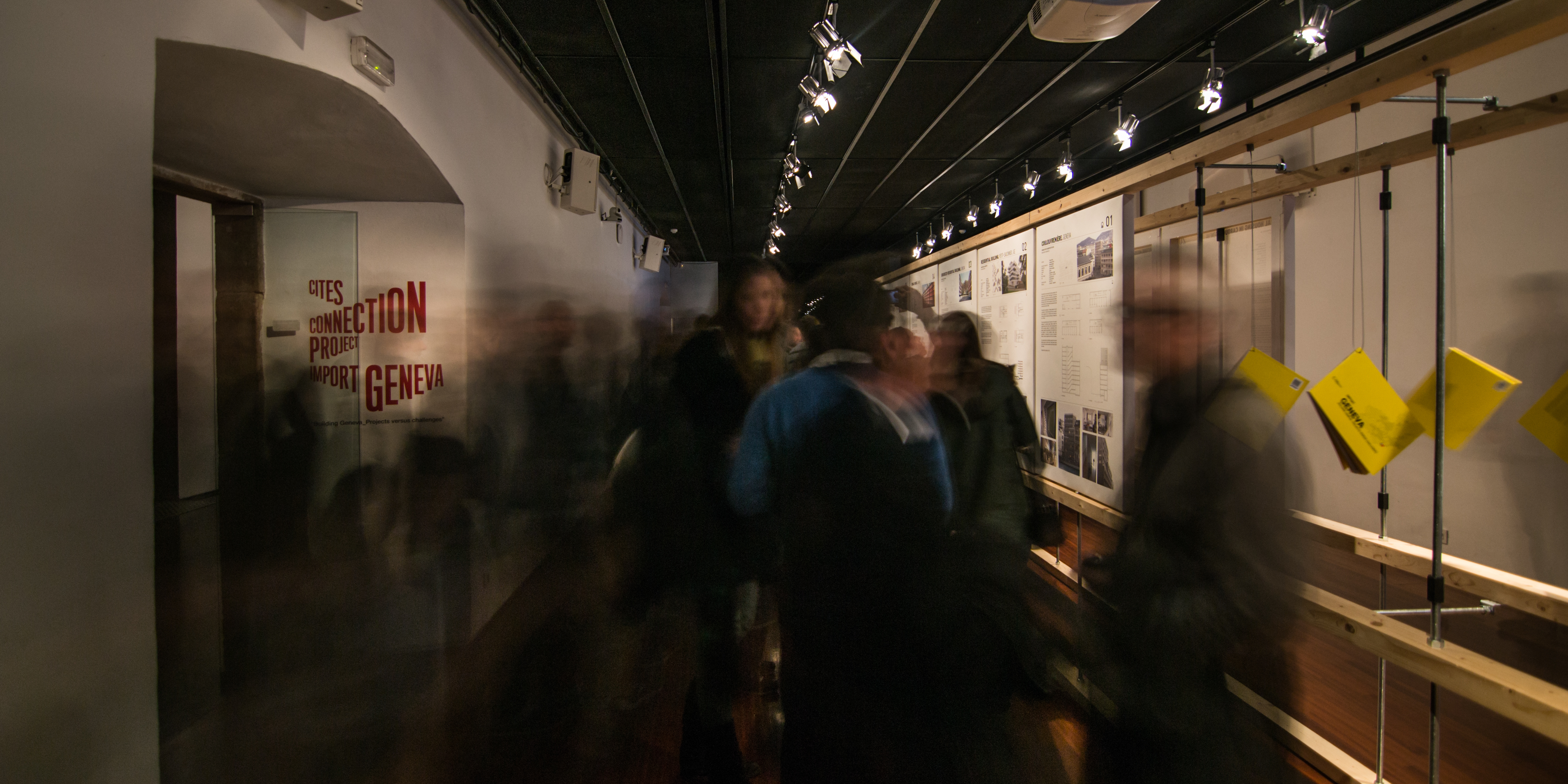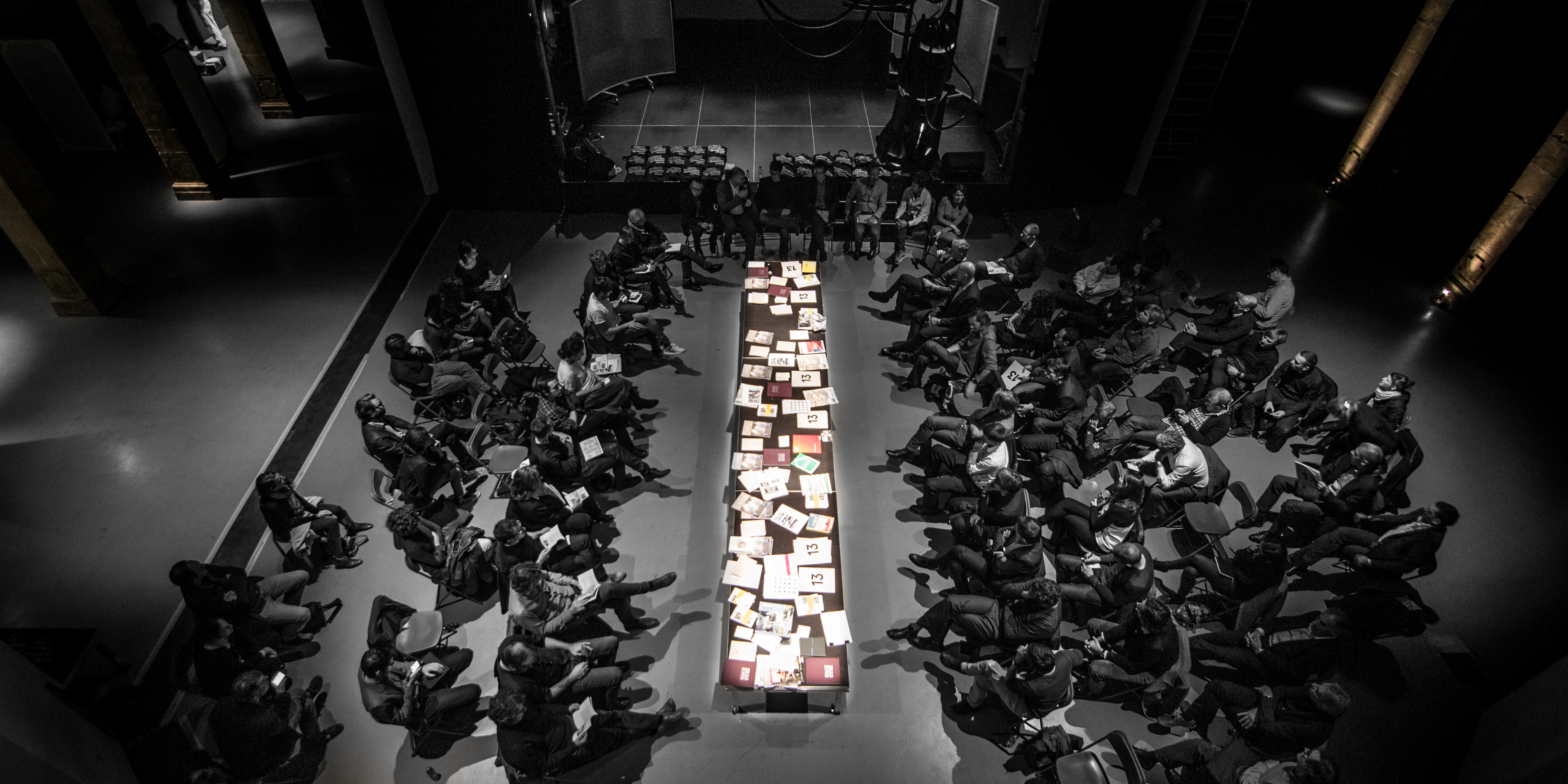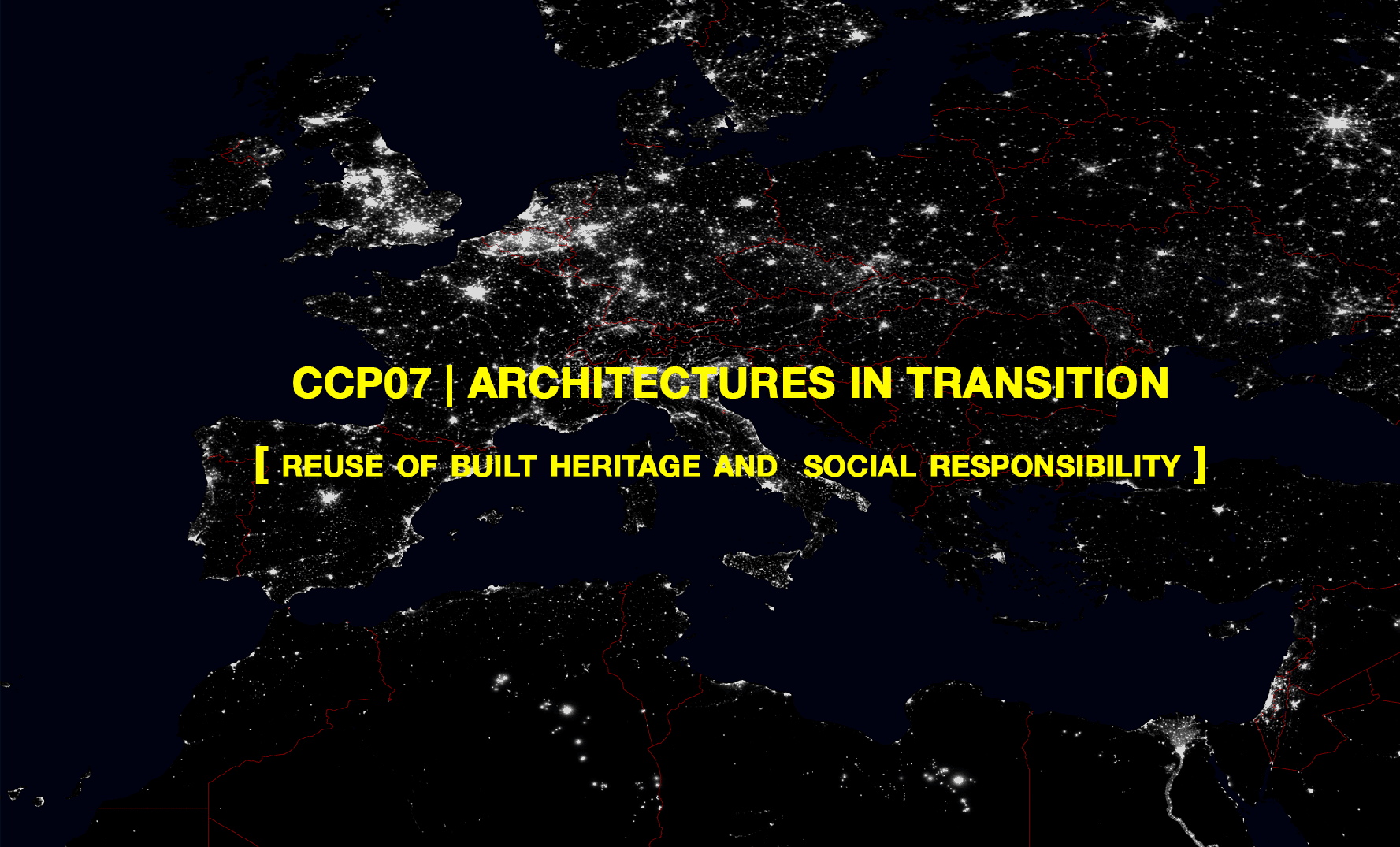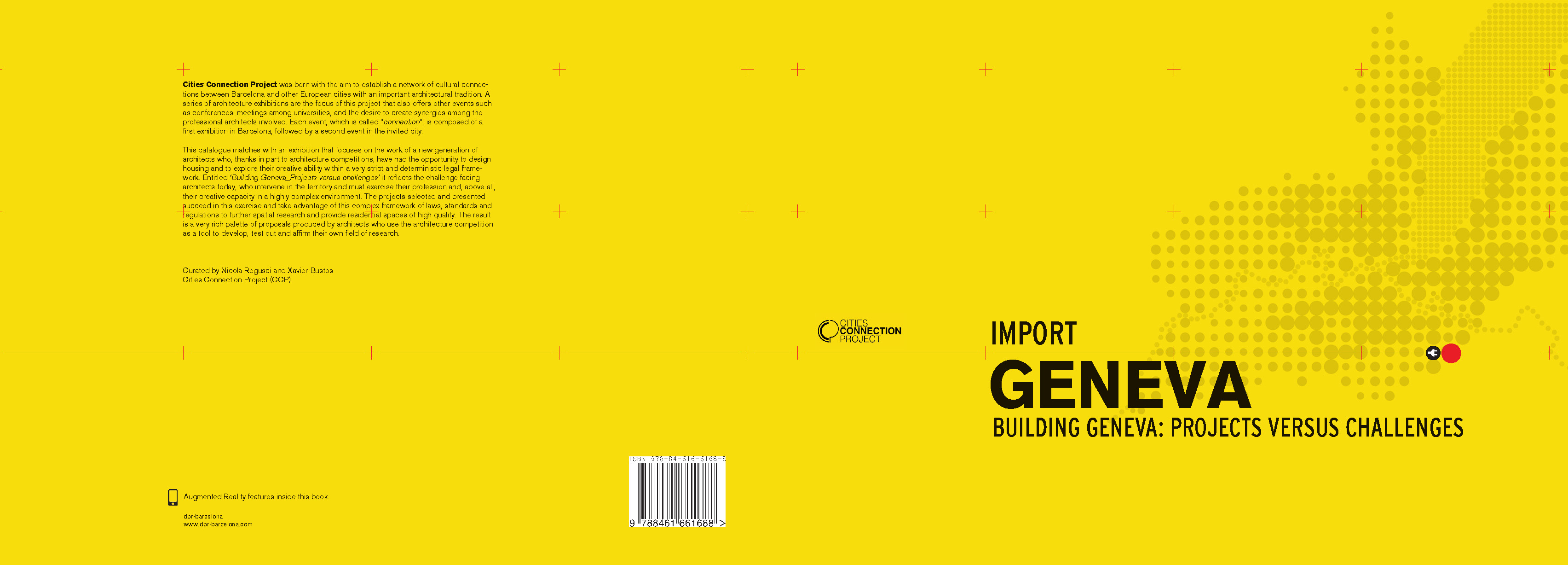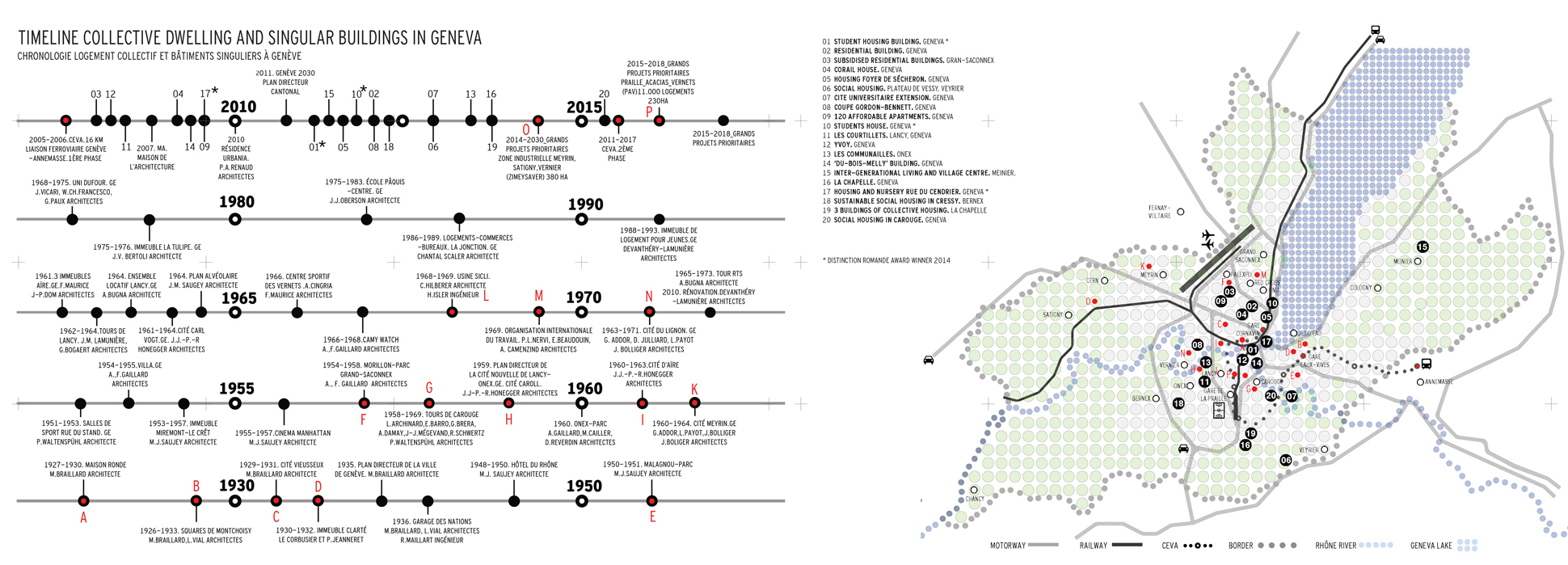Building Geneva_Projects Versus Challenges
This choice is due to the regions current impetus for expansion by means of major projects that seek to improve ongoing and future urban development. It is worth recalling that in the aftermath of the First World War, Geneva was the seat of the League of Nations, forerunner of the UN, laying the foundations of its future international and cosmopolitan aspirations. In the 1960s, the Canton experienced a period of rapid population growth, accompanied by significant physical expansion. In these years Geneva was a pioneer in planning policy, far in advance of the rest of Switzerland, with interventions that included the creation of a suburban belt of ‘satellite towns’. Some of these, acclaimed for their architectural quality, can be regarded as a kind of testing ground for collective housing: this is the case of Meyrin, Onex and Aïre, Le Lignon, not to mention the expansion of Carouge with the Tours project. Between 1955 and 1978,
100,000 homes were built, 33,000 will be with the help of state subsidies. Of note among the most remarkable groups of housing are Morillon-Parc, by the architect André Gaillard, the Carl-Vogt and Aïre developments by the Honegger brothers, and the new town of Lignon, by the firm of Georges Addor Architecte. This period of major growth was followed by a long period of stagnation in terms of planning, both politically and theoretically, while the property market crisis of 1989 precipitated a slump in housing construction, despite the increase in job opportunities. The rate of new building in the Canton was never as low as it was in the 1990s.
In 2005, the Geneva section of the Fédération des Architectes Suisses (FAS) decided to organize an international urban design competition entitled Geneva 2020. This competition, funded entirely by private sponsors, seeks to stimulate thinking about regional planning. The initiative was coordinated by some of the architects featured in this exhibition, and has become the catalyst for a whole new approach, especially on the part of the public institutions, to the endemic problem of housing shortage. Indeed, the architecture competition has come to be the accepted means of ensuring the quality of housing projects, in a context in which Geneva is estimated as needing 2500 new homes a year. The Canton is currently in a major phase of urban and regional development, both at the local level and at the level of the conurbation and of the whole arc of the Lake Geneva region. This is made up on the one hand of ten large-scale urban projects, and on the other of infrastructure projects related to the issue of mobility, such as the CEVA (Cornavin – Eaux-Vives – Annemasse) rail project, currently under construction.
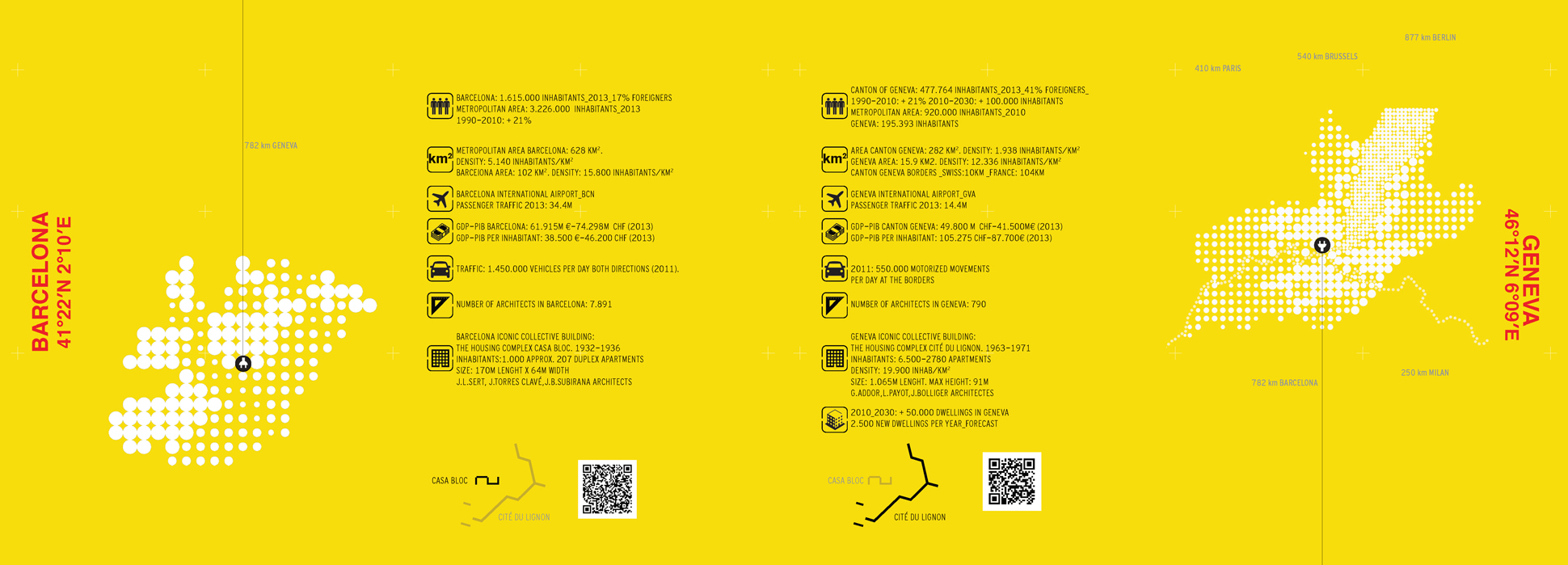
This exhibition focuses on the work of a new generation of architects who, thanks in part to architecture competitions, have had the opportunity to design housing and to explore their creative ability within a very strict and deterministic legal framework. This work has been entitled ‘Building Geneva_Projects Versus Challenges’ because it reflects the challenge facing architects today, who intervene in the territory and must exercise their profession and, above all, their creative capacity in a highly complex environment.
The projects selected and presented succeed in this exercise and take advantage of this complex framework of laws, standards and regulations to further spatial research and provide residential spaces of high quality. The result is a very rich palette of proposals produced by architects who use the architecture competition as a tool to develop, test out and affirm their own field of research.
